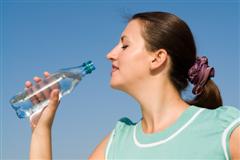|
Ecospun Fabric Gives A Whole New Meaning To Getting Fleeced
It's hard to imagine, but you could actually be wearing the plastic bottle you drank from not long ago. 
In fact, it could be the sweatshirt or jacket you're wearing now... Have you ever cursed at the mountain of plastic bottles that seem to pile up out of nowhere? Have you ever wondered if recycling them is worth the effort, or for that matter, what happens to them after you do? Well you'll be glad to know that it IS worth the effort, and amazing things become of them. Amazingly, they are transformed into a high quality polyester fabric. Ecospun fiber has many labels. Among them are ecofi, eco fleece, ecospun polyester, and fortrel eco-spun. Eco Fleece Characteristics
EcoFi can be used by itself to make several products, but for enhanced qualities, it is often blended with other fibers such as wool, cotton, and tencel. From there, a whole new world of end market products opens up. Products include clothing mattresses, blankets, fiberfill, felt, carpets and upholstery. Did You Know?
So chances are, you've worn it, sat on it, or walked on it without even realizing it. How Do Recycled Plastic Bottles Become Fabric?
Environmental Benefits If you’re thinking that eco-fleece is not environmentally friendly, then consider this. You know what the corner of your garage can look like when those empty plastic bottles pile up. They seem to grow and multiply all by themselves. Imagine, then what our landfills would look like if everyone's bottles ended up there. Each year, about 40 billion plastic bottles are produced in the US alone. Less than 30% of them are recycled. Worse yet, it takes over 700 years for these containers to decompose. Recycling plastic bottles saves immense amounts of water and fuel. Harmful air emissions are lowered, and global warming is reduced. For every 150 jackets made, 42 gallons of oil and about half a ton of toxic emissions is avoided. So, if you haven’t developed a growing concern before, now is the time. Simply recycle bottles. Great rewards are reaped from small efforts. Saving our earth is a good reason. Care What You Wear...
|




